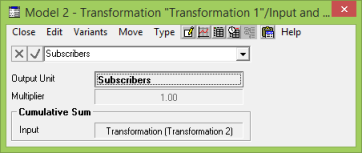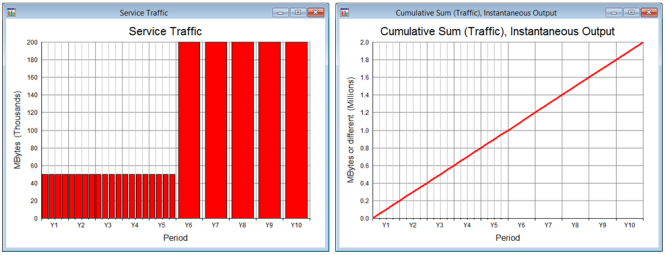The Cumulative Sum transformation is the inverse of the Delta transformation: it finds the instantaneous equivalent of an aggregate time series. STEM calculates the instantaneous output by summing each of the input aggregate values up to that point in time.

Figure 1: Cumulative Sum transformation dialog
The input of the Cumulative Sum transformation must be an aggregate basis, such as Traffic or Revenue. STEM will not let you use an instantaneous input basis.
Like other transformations, there are optional Multiplier and Output Unit inputs that can be used if required.
Simple example
An example output is shown in Figure 2 below. The input (on the left) is a constant aggregate value of 50,000 per quarter or 200,000 per year.
The output (on the right) is an instantaneous value showing the cumulative sum of the input: a constant growth of 50,000 over each quarter or 200,000 over each year. At the end of ten years of this constant growth (Y10), the output value is 2.0 million.

Figure 2: The output of the Cumulative Sum transformation (right) for the given input (left)
Example 2
Let’s assume that you need the cumulative subscriber numbers for a model, including churn. This could be necessary if, for example, you don’t get CPEs back from subscribers who leave the network, and you don’t want to model these as consumables. A Cumulative Sum transformation would be the most convenient tool for use in this situation.